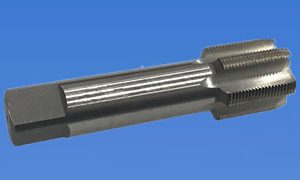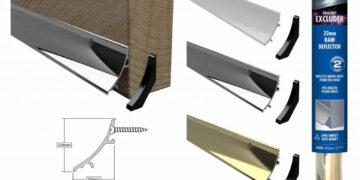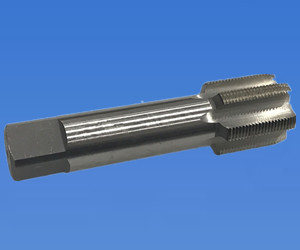In today’s fast-paced, precision-driven manufacturing world, the importance of using the right tools for the job cannot be overstated. One such tool that has become indispensable in various industrial applications is the Metric Acme Thread Tap. Known for its strength, durability, and ability to handle heavy loads, this threading tool plays a critical role in the creation of reliable components across multiple sectors—from automotive to aerospace to heavy machinery.
But what makes Metric Acme Thread Taps so essential for modern manufacturing? Let’s explore the features, advantages, and use cases that have made them a must-have in machine shops and factories around the world.
Understanding Metric Acme Threads
Before diving into the significance of the taps themselves, it’s important to understand what Metric Acme threads are. Acme threads are trapezoidal in shape, designed to offer strength and smoother movement in power transmission applications. Unlike standard V-threads, the broader base of Acme threads distributes stress more evenly and resists wear more effectively.
Metric Acme threads follow the metric measurement system and are ideal for global manufacturing operations, which require compatibility with international standards. These threads are commonly found in lead screws, jacks, presses, and other devices that involve frequent linear motion or the need to bear significant axial loads.
Precision Threading: The Role of Acme Taps
Metric Acme Thread Taps are specialized cutting tools used to create internal threads that match the Acme thread profile. These taps are precisely engineered to cut clean, uniform threads into a pre-drilled hole, ensuring that mating parts can function efficiently and reliably under heavy use.
Without the use of proper taps, thread profiles can become inconsistent, leading to mechanical failure, increased friction, or premature wear. Metric Acme taps ensure consistent thread depth and pitch, which is vital for applications that require precise linear movement.
Key Advantages of Metric Acme Thread Taps
1. Strength and Load Capacity
The trapezoidal design of Acme threads allows for better load distribution. When paired with the precision cutting ability of Metric Acme Thread Taps, the result is a threaded connection capable of withstanding heavy loads without deforming or stripping.
2. Smooth Linear Motion
Metric Acme threads are designed for efficient power transmission. The threading created by Acme taps reduces backlash and ensures smoother, quieter linear motion—ideal for screw jacks, vises, CNC machines, and industrial actuators.
3. Durability and Wear Resistance
Manufacturing environments are tough, and thread components often endure friction, heat, and repetitive motion. Metric Acme Thread Taps produce threads that can handle this wear-and-tear, extending the lifespan of components and reducing maintenance costs.
4. Global Compatibility
With industries increasingly collaborating across borders, metric specifications provide universal compatibility. Metric Acme Thread Taps ensure your threaded parts can be used or replaced anywhere in the world, reducing supply chain complications and improving production efficiency.
Applications in Modern Manufacturing
Metric Acme Thread Taps find widespread use in a variety of industries:
-
Automotive Manufacturing: Used in the assembly of heavy-duty parts and fasteners that require strong, wear-resistant threading.
-
CNC Machinery: Common in the threading of machine tool leadscrews, which rely on accurate, high-load threads for precise motion.
-
Aerospace and Defense: Precision and durability are critical in aerospace applications, where any deviation can lead to catastrophic results.
-
Robotics and Automation: Many actuators and linear drives in robotic arms rely on Acme threads to deliver precise, repeatable movement.
-
Heavy Equipment and Construction Machinery: Ideal for jacks, presses, and clamps that endure high mechanical loads.
Selecting the Right Tap
Choosing the appropriate Metric Acme Thread Tap depends on several factors:
-
Material being tapped: Harder materials may require high-speed steel (HSS) or carbide taps.
-
Thread class and tolerance: Consider the fit required for the application—looser fits for easier assembly, tighter fits for high precision.
-
Number of flutes: More flutes can mean a smoother finish, but fewer flutes may be better for chip evacuation.
-
Thread pitch and diameter: Ensure compatibility with the design specs of your components.
Consulting with a tooling specialist or supplier can help identify the right tap for your production line, ensuring optimal performance and longevity.
Maintaining Quality and Performance
Proper care and maintenance of Metric Acme Thread Taps are essential for sustained performance. Always use appropriate cutting fluids to reduce heat and wear, and regularly inspect taps for dulling or damage. Replace worn taps promptly to avoid thread quality issues or tool breakage.
Conclusion
As modern manufacturing demands greater efficiency, precision, and durability, Metric Acme Thread Taps have proven themselves to be an essential tool. Their unique design, global compatibility, and ability to produce strong, reliable threads make them invaluable in various applications.
Whether you’re producing components for high-performance machinery or maintaining complex automated systems, investing in quality Metric Acme Thread Taps can enhance your production capabilities, improve part reliability, and reduce operational costs. In short, they’re not just tools but a cornerstone of modern manufacturing success.



























































